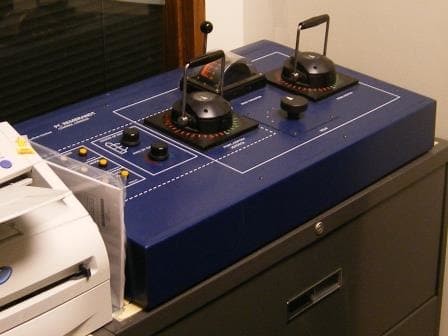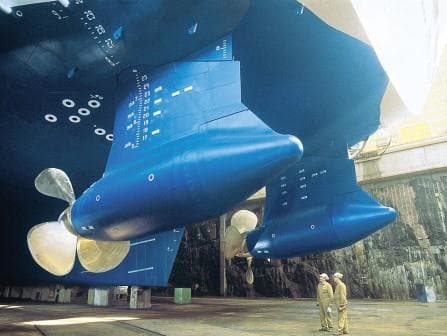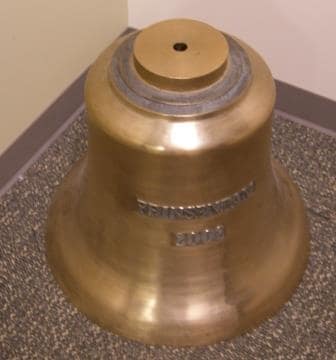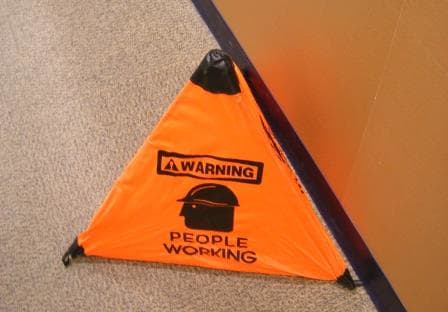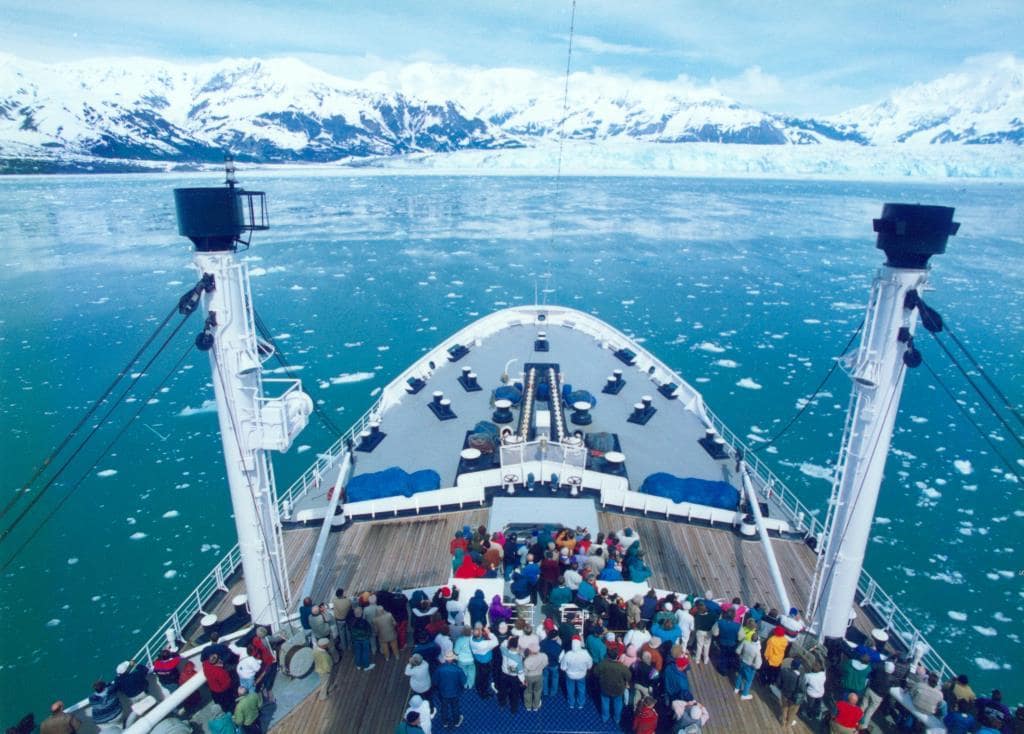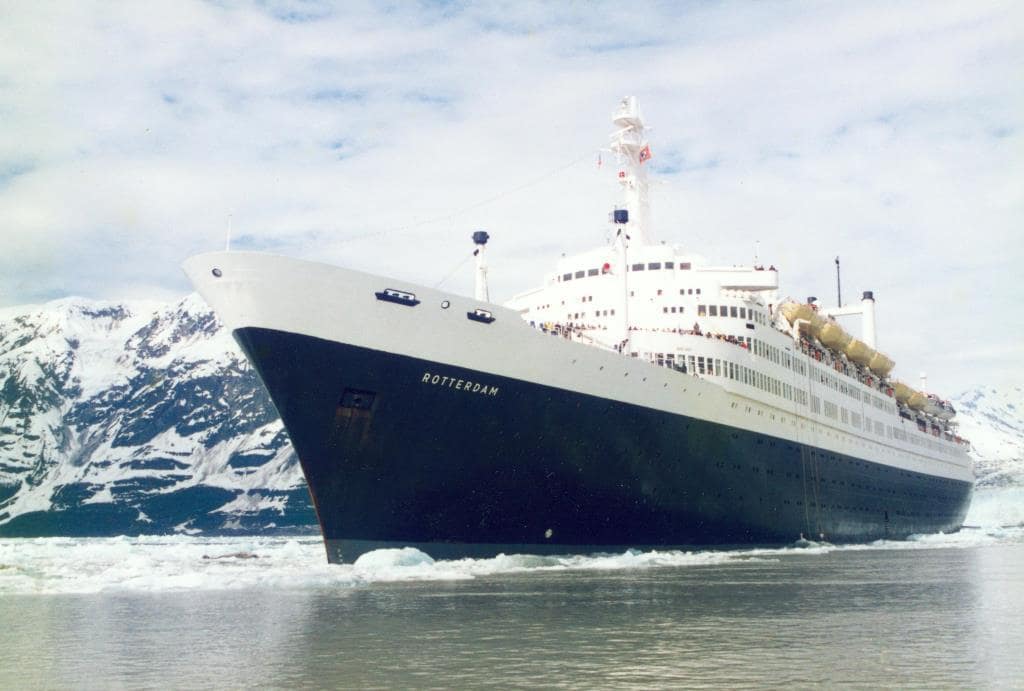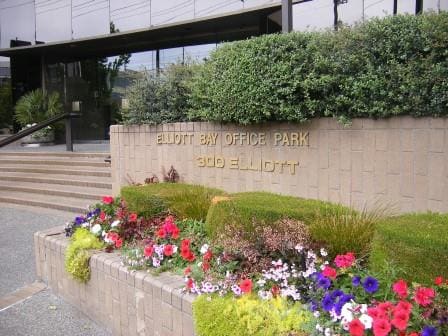Most of the building is occupied by Holland America and since 2011 also by Seabourn Cruise Lines. Although Seabourn is a separate company in its operation, in the office the Seabourn People are nicely mixed in with the Holland America personnel. Nautical is grouped with Nautical, Marketing with Marketing, etc. etc. The offices are scattered over the 1 st. 3rd and 5th. Floor. A result of the constant expansion of Holland America since it came to Seattle in 1983. The 2nd floor and some of the 5th. Floor is occupied by other companies. Most of them have a connection with Medical, Hospitals and Pharmaceuticals.
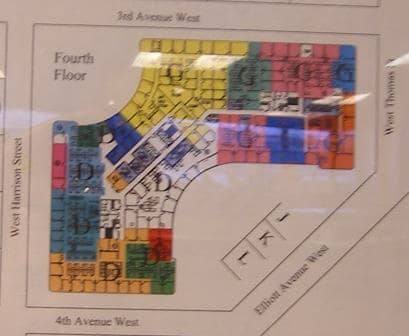
Section lay out of the 4th. floor
When you come to the building for the first time, it can be very confusing. Not just because it has a warren of cubicals and offices but also because the building is not square or oblong but curved. Curved in the form of a U with indeed two legs but where the U curve is, that curve is mirrored, so the center of the U has a curved façade at both sides. That makes it very confusing when walking around as a human being is used to square and oblong things or perfect rounds. Certainly for somebody like me, who comes from the ships with their straight corridors, it takes a while to figure out how the whole layout works. There are four elevators centered around the main lobby and from there all sorts of sections veer off into the two legs of the U.
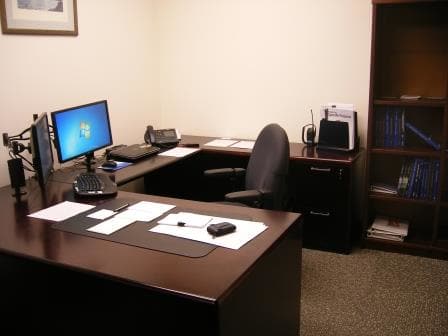
my short term memory spread over the desk
We will get to various levels in due course but let me start with where I have been parked for the period that I am in the office. As I belong to Nautical, I reside in a section called Fleet Operations. I am not an expert on office configurations so I do not know if what I see here is an industry standard but we have a central area with cubicals flanked with separate offices surrounding it. There is a sort of pecking order with the highest functions having the largest offices with a window. Then there are inner offices that face the cubicle square for the lesser Gods and then there are the people who occupy the cubicles.
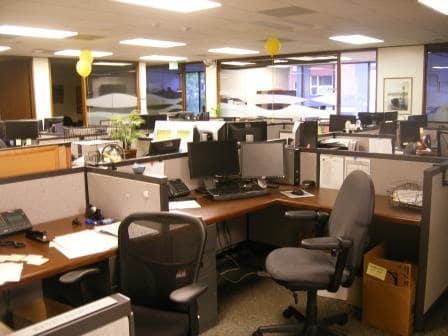
A whole sea of cubicles
A friend of mine used to say, that that is the area where the real work gets done.
As I am supposed to be sea side for most of the year, I do not have my own office. I am currently parked in an office overlooking cubicle square that was occupied before me by a Deputy Director Nautical and before that by a Lady who did something for the Mariners Society.
As it is a shipping company, the hallways, offices and cubicle areas are littered (I suppose that is not exactly the right word as some of it is quite historical and valuable) with shipping memorabilia and that makes it look different to a regular office. I do not think that the Offices from the Hospital companies here in the building will be adorned in the same way. I do not expect that those corridors are filled are with stretchers and wheelchairs from the bygone days to the current time.
Also on the 4th. Floor there are some gems to be found. When the company left for the States in 1973, most items from the Head Office in Rotterdam were handed over to the local maritime museum and thus saved for prosperity. Some items did come over, especially what had been hanging in the Director’s offices. I have been told those offices where simply packed up lock, stock and barrel in containers and unloaded directly into the new office with everything included. Other items came to the American head office when various Sales Agency’s in the major US cities were closed.
My highlight of the fourth floor is a Jacobsen painting of the Maasdam from 1889. The painting is dated either 1891 or 1897. Anthony Jacobsen painted for a living and basically did what professional photographers do nowadays. Shipping Company’s ordered paintings from him in the way they now order photos. So the majority of his paintings are of a similar composition. The ship is always under an angle, due to the wind blowing into the sails, and the seas are either choppy to very boisterous or even stormy but never flat. He painted a lot of ships and also quite a few for Holland America Line. He lived in Hoboken near the docks so that made it quite easy as well. Nowadays these are scattered all over the place, some in Musea and some in private hands but Holland America still has one as well.
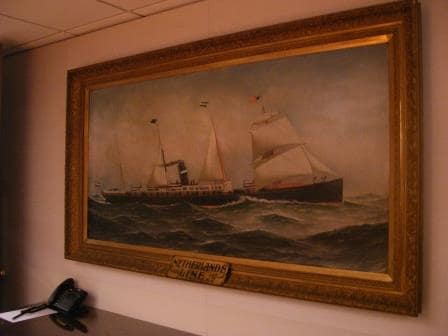
SS Maasdam 1889 by Anthony Jacobsen
It is hanging in one of the meeting rooms on the fourth floor. The painting is interesting for two reasons: First it shows the passengers on deck in roughly the right dimensions to the ship and that gives us an impression of how relatively small the ships were in those days but still they managed to cram nearly 1100 people inside the hull. (Maasdam of 1889: 3,983.84 tons 150 first, 60 second, 800 3rd. 85 crew)
Secondly, the name plate under it: Netherlands Line. Holland America was in those days officially called the Noord Amerikaansche Stoomvaart Maatschappij or NASM which of course nobody could pronounce. So everybody called it the Holland America Line. In a similar way that they used the word Cunard as a simpler name for the British & North American Steam Packet Company. However the HAL Directors in those days did not like this plebian naming of their company (they held out until 1896 before admitting defeat) but the word Netherlands Line was found acceptable, as it more or less indicated that there was only one Steamship Company in the Netherlands. Holland America always considered itself the foremost company in Holland so the thinking was not that usual. (There was a real Netherland Line as well which sailed to the Dutch East Indies) As Mr. Jacobson hoped for more assignments he of course ensured that the painting was labelled properly.

